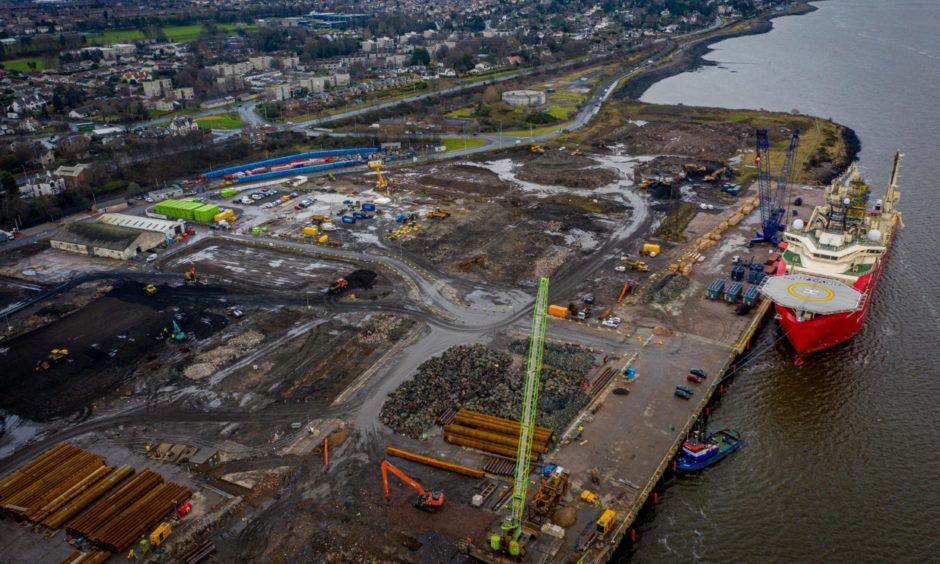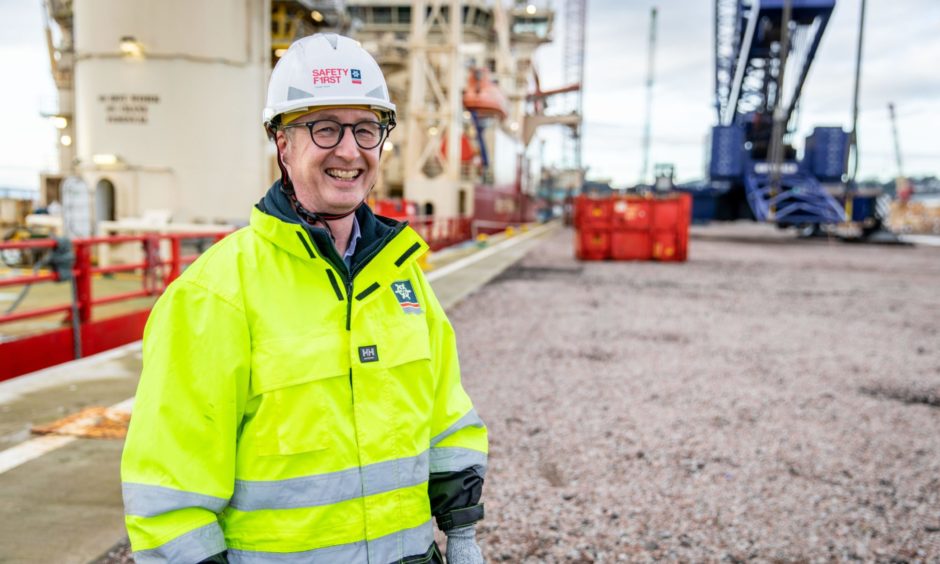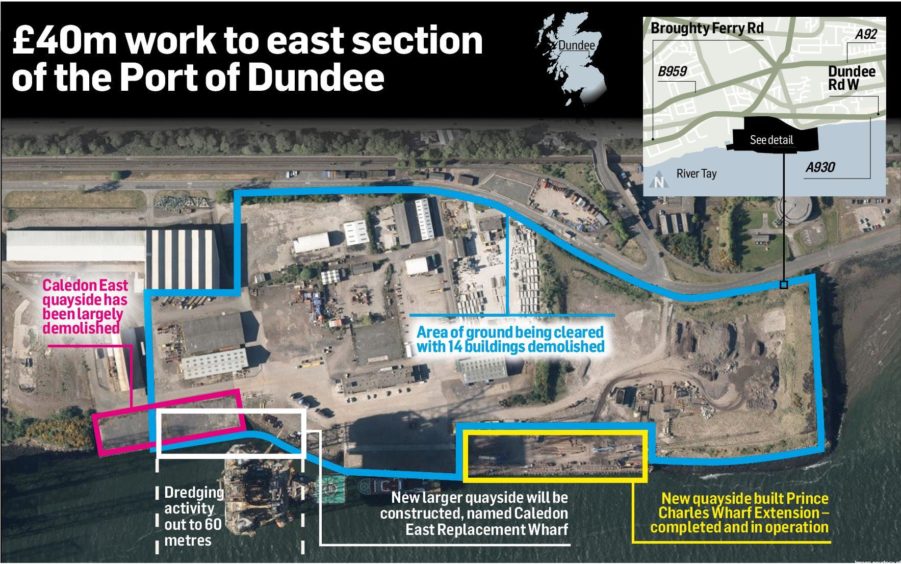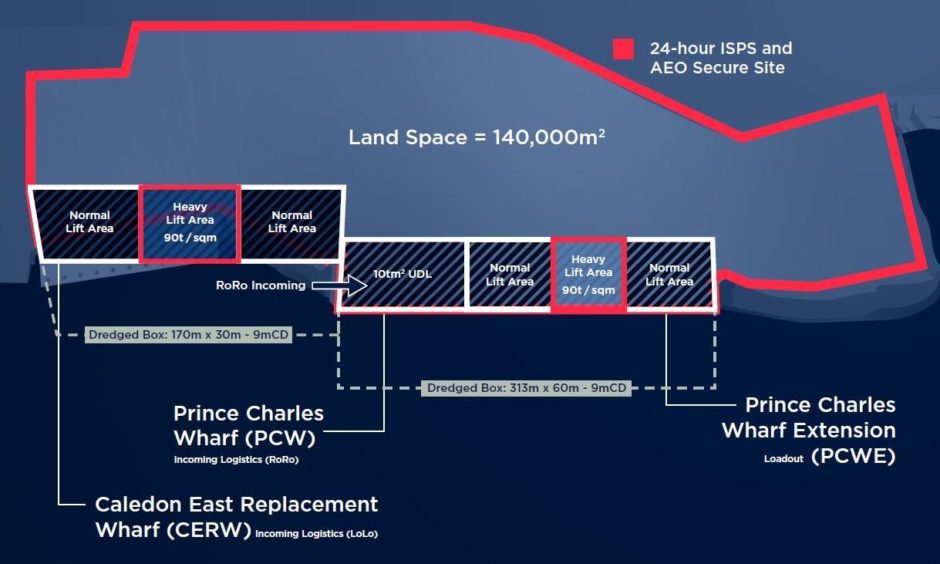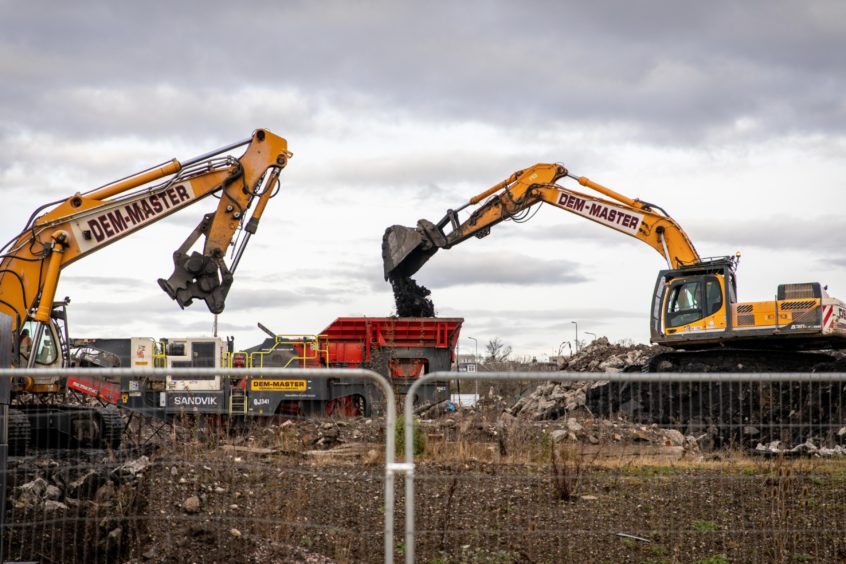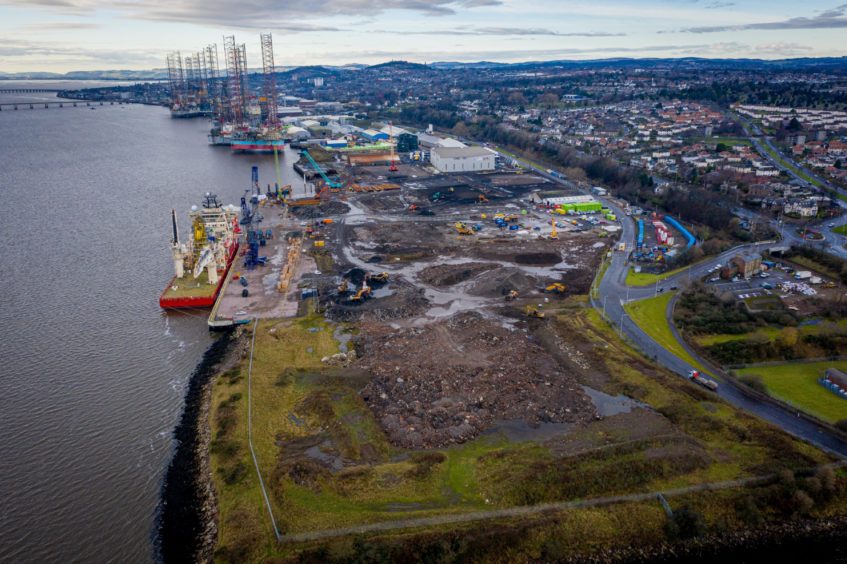It’s the size of 20 football pitches, costs £40m and has more construction equipment than every other Dundee development combined.
Hundreds of workers are on site creating Scotland’s most capable heavy lift quayside at the Port of Dundee, ready to capitalise on a decommissioning and offshore renewables future.
At the east end of the port, a quay has been demolished and more than a dozen buildings have been torn down across a vast area.
Drone footage of the site is above this article
Ginormous steel piles are being driven into the river bed upon which a new, larger quay will be constructed.
It will be ready for use assembling all 54 turbines required for the Neart Na Gaoithe (NnG) offshore wind development by the end of 2021.
Benefits for decades
Stuart Wallace, the chief operating officer of port owner Forth Ports, said the staggering investment would benefit the whole of Dundee for generations to come.
“We are fortunate that NnG is the first contract but this wasn’t about creating something for one contract,” he said.
“This was about Forth Ports looking at Dundee’s key role to play in the energy transition, be that the renewable energy sector, offshore wind, floating wind and the end of life decom of oil and gas assets.
“This will bring benefits for the next 30, 40, 50 years.
“At the east end, we are spending £40m creating 20 football pitches worth of outside high quality, high spec storage space coupled with 500 metres worth of quayside that has heavy lift capabilities.
“We see the investment and expansion of the port as an integral part of the ongoing success in the city of Dundee.”
What work is taking place?
Phase one of the work saw the construction of heavy lift quayside, the Prince Charles Wharf Extension, which was used for the prominent Shell Curlew decom project last year.
Since August, 14 buildings have been demolished on land east of Shed 26 stretching from Stannergate Road to the River Tay.
The buildings mostly dated from the 1960s and 1970s and this land is being turned into a flat surface with a layer of aggregates that can be used for storage.
Meanwhile the Caledon East quayside has been largely torn down and in time will be completely demolished.
Piling work is ongoing before a new, larger quayside, currently named Caledon East Replacement Wharf.
Dredging work 60 metres out from the new quay is also taking place to allow the world’s largest heavy lift vessels to use the new facility.
All the work is being privately funded by Forth Ports and is scheduled to be completed by Autumn 2021.
Catalyst for Dundee’s evolution
For senior port manager David Webster there is only one word to describe the scale of the work taking place – epic.
“When I drive up to the gate in the morning and look over at the site, it puts a big smile on my face – it’s the next phase in Dundee’s evolution,” he said.
“We evolved over the last century from jute to shipbuilding and now it’s the energy transition with offshore renewables and decommissioning.
“This development is the catalyst that allows a lot of this emerging industry to come to Dundee.
“We saw that with decom – when we start doing things, the supply chain shows up and that’s what’s going to happen with the energy transition.
“The job creation from this won’t just be focused on the port, it will benefit the whole of Dundee.”
The work is being delivered by construction and civils engineering company GRAHAM.
Who are Forth Ports?
Founded in 1967, Forth Ports is the UK’s third largest port operator.
It employs more than 1,100 staff and owns and operates eight commercial ports in the UK.
They are Tilbury on the Thames, Dundee on the Firth of Tay and six on the Firth of Forth – Leith, Grangemouth, Rosyth, Methil, Burntisland and Kirkcaldy.
Within and around the Firths of Forth and Tay, Forth Ports manages and operates an area of 280 square miles of navigable waters, including two specialised marine terminals for oil and gas export and provides other marine services, such as towage and conservancy.
Yesterday the Port of Grangemouth announced a £3m investment in its rail freight offering which will cement its position as the key strategic freight and export/import hub for Scotland.
It will significantly scale up and modernise the port’s current rail capacity to handle the longest freight trains on the UK network.
